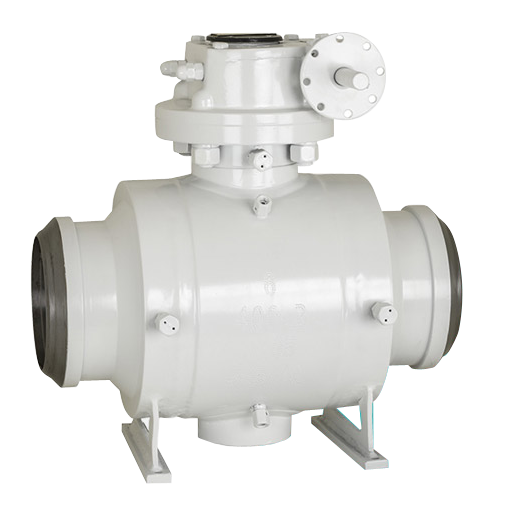Large diameter welded ball valves are important valve products commonly used in industrial production, and their safety in use is crucial. If installed improperly, there may be safety issues of uneven force distribution, and in severe cases, it may cause harm to personnel and equipment; It may also cause problems such as valve damage and leakage, thereby shortening the service life of the valve.

Below, we will introduce the precautions for installing this large fully welded ball valve from four major aspects.
1. Pipeline inspection
Before installation, it is necessary to ensure that the pre-treatment work of the pipeline has been completed, including cleaning the internal and surrounding areas of the pipeline, removing foreign objects and rust, etc.
2. Valve lifting
(1) When lifting a ball valve, the lifting rope should be tied to the lifting lug (ring) or flange on the valve body, and should not be tied to the handwheel, valve stem, or actuator to avoid damage to the actuator.
(2) During the lifting process, the blind covers at both ends of the ball valve should not be removed to prevent dust and foreign objects from entering the chamber. It is necessary to avoid hitting the ball valve and colliding with pipeline accessories or joints. Do not use chain lifting, but use soft belts for lifting. Take corner protection measures at the edge of the valve to ensure that the external paint of the valve is not damaged during the lifting process.
3. Valve inspection before installation
(1) Determine the switch position. The ball valve is in the fully open position when leaving the factory, and when installed on the pipeline, it is generally necessary to keep the valve in the fully open position. When it is necessary to install in the fully closed position, appropriate protective methods can be confirmed in advance with the manufacturer.
(2) Inspection of installation direction and position. Before installation, carefully check whether the valve nameplate and identification match the installation and usage requirements.
(3) Clean the inner chamber and sealing surface of the valve. Dirt is not allowed to adhere to the cavity. If there is, a clean soft cloth should be used to wipe off the attached dirt before installation.
(4) Drive device inspection. Before installation, check whether the drive device operates flexibly, whether there is any jamming, whether the bolts and nuts are loose, whether the packing is tight, and whether the valve switch status is consistent with the installation requirements.
4. Welding of valves and pipelines
(1) Before welding with the pipeline, the surface of the pipeline and ball valve welding joints must be cleaned to remove impurities such as dust and oil to ensure the quality and strength of the weld.
(2) The size and shape error of the ball valve piping should be within the allowable range and consistent with the centerline of the main pipe before welding.
(3) Before welding, cover the sealing surface area of the valve with a protective tape approximately 25mm wide (between the ball and valve seat, between the valve seat and the left and right body, it is recommended to apply lubricating grease to adhere the protective tape) to prevent splashes from falling into these areas.
(4) When welding, appropriate welding processes and parameters such as preheating temperature, welding current, welding speed, etc. should be selected according to the corresponding welding process regulations to ensure welding strength and quality.
(5) Large diameter valves should be welded in sections in a certain order to ensure the quality and strength of the welding.